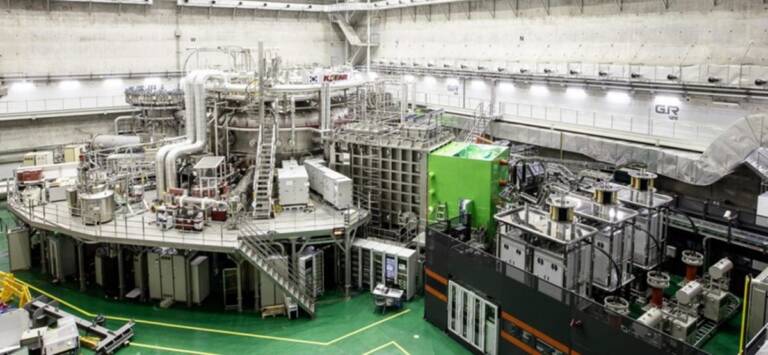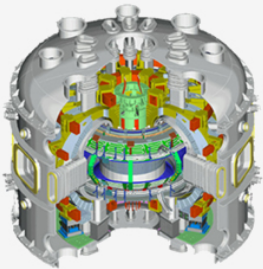Nuclear fusion: Korean KSTAR tokamak reaches new temperature records, thanks to new materials

The Korean artificial sun, KSTAR , broke its previous plasma operation record during its first hydrogneous plasma injection, after upgrading its flux diverters, one of the components facing the plasma, with tungsten monoblocks .
The Korea Institute of Fusion Energy (KFE) announced that it successfully sustained plasma with ion temperatures of 100 million degrees Celsius for 48 seconds during the latest KSTAR plasma campaign, which ran from December 2023 to February 2024. Furthermore, it reached high confinement mode (H mode) for over 100 seconds.
To develop fusion energy, it is essential to secure the technology to sustain high-temperature, high-density plasmas, where fusion reactions occur more actively, for longer periods. To achieve this goal, fusion researchers are conducting several plasma experiments using fusion devices such as KSTAR.
KSTAR, a superconducting t okamak , has been a leader in research on long-pulse plasma operations. The KSTAR reached the 100 million degree temperature milestone for the first time in 2018 and set a new record by sustaining a plasma with an ion temperature of 100 million degrees for 30 seconds in 2021. The tokamak is the machine traditionally designed to achieve nuclear fusion and is the instrument that will also be used by the European ITER machine.
Compared to ITER, however, KSTAR is a sort of model to a smaller extent: if it is expected that ITER will be able to manage 830 MC of Plasma, the Korean model manages only 17.6, so it presents itself as a miniature ITER.
The secret is in the tungsten
During the latest campaign, the KSTAR team managed to extend the operation of the ultra-high temperature plasma for 48 seconds, maintaining an ion temperature of 100 million degrees. This achievement was based on improvements in the performance of plasma heating systems and advances in high-temperature plasma operation and control techniques. The lifetime of the plasma led to a new record in the field of ion temperatures above 100 million degrees.
The basis for this success is a technological innovation in the injection system: compared to previous carbon-based diverters, the new tungsten plasma flow diverters showed an increase in surface temperature of only 25% under similar thermal loads. This offers significant advantages for long-pulse high-heat power operations,” NST explained.
The success of the tungsten diverters can provide valuable data for the ITER International Thermonuclear Experimental Reactor project and, in general, for all attempts to achieve commercial nuclear fusion through the tokamak toroid system. The problem so far has been linked not so much to obtaining fusion, but to a process that obtains more energy than what was used to heat the system. For now, the energy gain has only been achieved with laser fusion systems.

Thanks to our Telegram channel you can stay updated on the publication of new Economic Scenarios articles.
The article Nuclear fusion: the Korean KSTAR tokamak reaches new temperature records, thanks to new materials comes from Economic Scenarios .
This is a machine translation of a post published on Scenari Economici at the URL https://scenarieconomici.it/fusione-nucleare-il-tokamak-coreano-kstar-raggiunge-nuovi-record-di-temperatura-grazie-a-nuovi-materiali/ on Mon, 01 Apr 2024 11:00:17 +0000.

